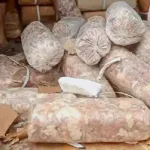Jammu and Kashmir is blessed with varied geographical zones and different cultures that makes it marketers delight when it comes to tourism promotion. But more than three decades of ethno-religious cleansing posed a serious challenge to the tourism industry. In spite of these challenges the tourism sector maintained its brisk business but there was indeed slump in the peak seasons when Kashmir witnessed turmoil. But over the years there is improvement in tourist arrivals. Chief Minister Omar Abdullah has put the statistics of tourist arrivals in the Assembly and made the picture clear. While speaking in the Assembly, he said that more than 2.35 crore tourists have arrived in the Union Territory(UT) in 2024 as against 2.11 crore the previous year. It is pertinent to mention he also holds the tourism portfolio. Government has been prioritising the promotion of religious tourism places in Srinagar. He informed the house that places like Dal Lake, Nishat Garden, Shalimar Garden, Chashamashahi, Pari Mahal besides the various religious places like shrines, temples and gurudwaras besides the other landmarks define the unique character of Srinagar. He has rightly underlined that tourism is the key pillar of Jammu and Kashmir’s economy, providing direct and indirect livelihood opportunities for various stakeholders that include hotel staff, taxi drivers, souvenir vendors and the local youth. Also, the government is making efforts to promote other forms of tourism like adventure tourism, golf tourism, eco-tourism, pilgrimage tourism, cultural and heritage tourism. This promotion strategy is meant to attract a wide range of tourists to Jammu and Kashmir. Chief Minister informed the house that the government is actively involved in promoting top tourist destination of Jammu and Kashmir at national and international platforms .He has said that the focus is on the lesser known tourist destinations of UT like Gurez, Keran, Bungus, Tosamaidan, Aharabal, Doodhpathri, Machail, Bhaderwah, Sukrala Mata, and Pancheri. With these inputs in the public domain it can be said that the UT Government is strategizing to evolve new destinations with a focus on infrastructural developments. That is indeed a welcome move as it will lead to the benefits in terms of multiplier effect enabling the various stakeholders involved in tourism business, directly and indirectly to secure their livelihood. But as far as the ground reality is concerned. There is a need to adopt a professional approach to develop tourism in Jammu and Kashmir. In the previous editorial the Rising Kashmir had underlined the state of Jasrota fort located in Kathua district of the UT. The fort complex has lost its aesthetic value as it has been subjected to non-sympathetic reuse with restoration being done with incompatible material. The original structure has been vandalised. Not only that, the forest cover that surrounds the fort is also facing the challenge as there seems to be no maintenance that demands. This one of the representative cases that underlines that challenges that are being faced by heritage and wildlife tourism. There is an immediate need to adopt a multi-disciplinary approach by involving the qualified tourism professionals and specialists from various disciplines to devise a comprehensive policy for tourism development in Jammu and Kashmir. As tourism is a specialised sector. It is intangible. And needs a professional approach. People from generalised departments cannot do justice to tourism. If the Government of Jammu and Kashmir wants to develop tourism in a comprehensive manner then it must take the services of the qualified tourism professionals. It is a sad commentary on the part of the policy makers so far that both in Jammu and Kashmir universities have been running tourism management courses at the post-graduate level(MBA-Hospitality and Tourism & MTM) but the services of these qualified professionals have not been utilised to the best possible level. The UT government must think on this issue and use their services to develop the tourism potential of Jammu and Kashmir.
Tourism Promotion in J & K

Sign Up For Daily Newsletter
Be keep up! Get the latest breaking news delivered straight to your inbox.
By signing up, you agree to our Terms of Use and acknowledge the data practices in our Privacy Policy. You may unsubscribe at any time.
Leave a Comment Leave a Comment
Stay Connected
Latest News
Recent Posts
- J&K govt warns meat sellers, e-commerce platforms to comply with food safety rules
- Youth voices now roar in stadiums, not streets: LG Sinha
- JKP at forefront in fight against human trafficking: Spl DG Coordination
- Khelo India Water Sports Fest marks new era for J&K youth: CM
- Woman’s death in Shopian sparks protests in Anantnag







